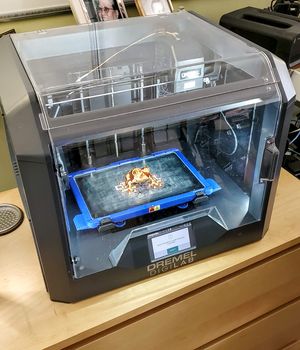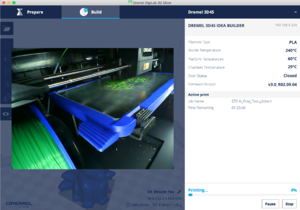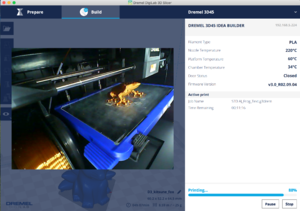NOTES: Improving Upon 3D Printing
Contents
Summary
This page is "Under Construction" and subject to frequent changes as a Draft. |
My efforts with the Dremel Digilab 3D45 printer are going to be more experimental, rigorous, and better documented than my earlier efforts with the XYZprinting daVinci 1.0 Pro 3-in-1. As I learn and improve upon my 3D Printing skill and expertise, I'll update this page and HOW-TO: Cloud-Shared 3D Printing.
Notes
PLA Filaments
Temperatures:
- Brands: Dremel
- Head: 240°C
- Bed: 60°C
- Chamber: 29°C
References:
- Noted from Filament Settings after PLA RFID
Observations:
- Pending
Shiny Silk PLA Filaments
Temperatures:
- Brands: Mika3D, CC3D
- Head: 200-210°C
- Bed: 50-60°C
Cautions:
Although no particular problems are expected while printing with this filament type, it’s worth mentioning a couple of differentiating points in regards to normal PLA.
Due to the presence of more elastic additives in the filament, some users have reported problems with bed adhesion and some clogging issues. In fact, the correct bed temperature is a bit of a grey area, as many manufacturers suggest an unheated bed.
Also, this type of filament could cause problems with under extrusion and part shrinkage. It seems that these filaments work best with slightly elevated printing temperatures compared to normal PLA, so the print is more durable and less brittle, and for the elastomers to melt correctly and give it the signature glossy look. Some good news is that warping doesn’t seem to be a prevalent issue with silk PLA
References:
Observations:
- Noticed cracking and splitting when printing Frog test at 220°C head with 60°C bed
- "Clogged" twice (One after Kitsune, again after Leash Hangar), appears to be issue with feed rather than extruder temperature, maybe run at higher temperature than recommended 220°C (per Mika3D label)
ECO-ABS Filaments
ABS Filaments
Nylon Filaments
Nylon is a synthetic polymer which is based on polyamides. It’s resilient, strong, durable and a tad bit flexible. Another property is that it’s hydroscopic. This means it absorbs liquids. This makes nylon a good choice when you need to dye your printed part in a certain color. It also means that nylon filament has a short shelf live and is difficult to store.
Since nylon has such a unique durability to flexibility ratio, it is often used for functional parts. Think of prosthetics, medical equipment, connectors and living hinges.
References:


